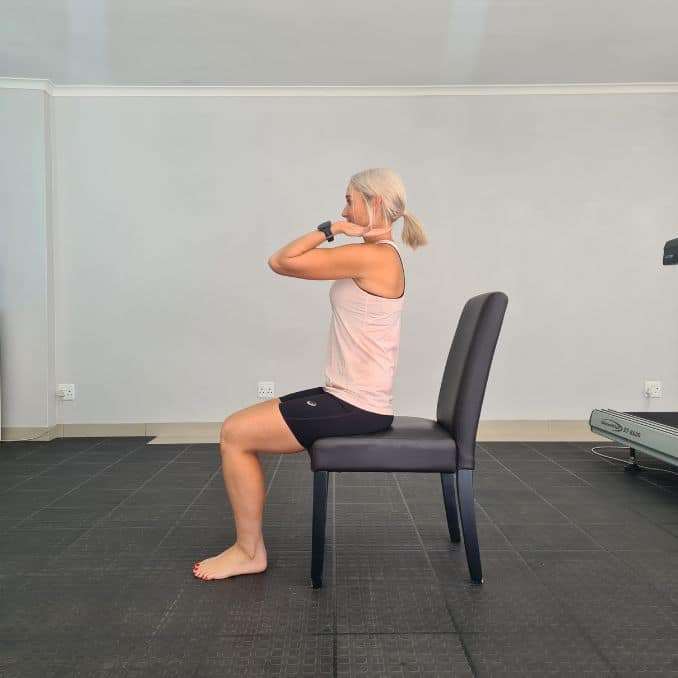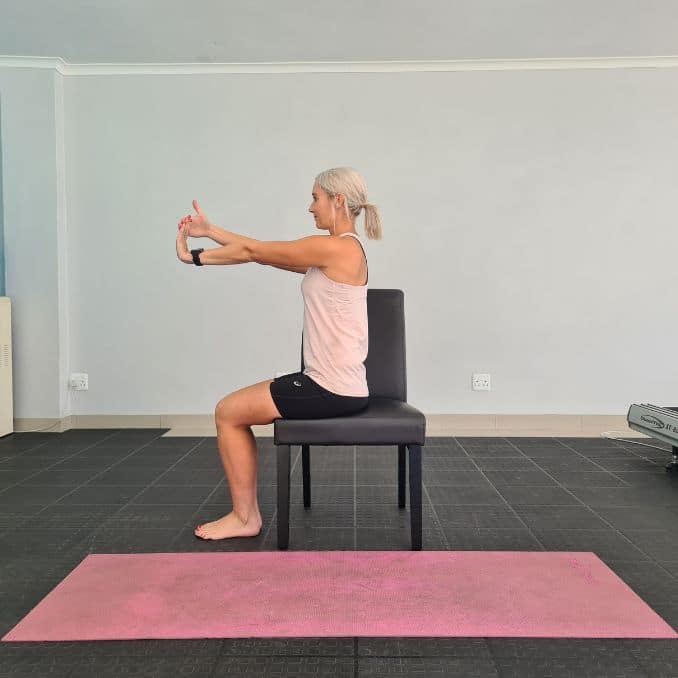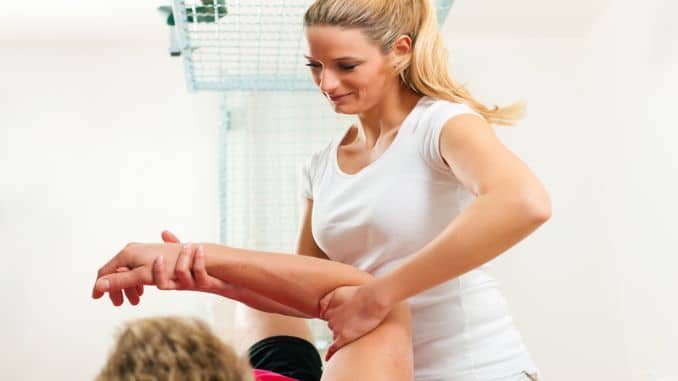
Elbow bursitis is the inflammation in the olecranon bursa — the fluid-filled sac that protects and cushions your elbow joint. It’s usually caused by overuse from your job or activities like sports. You’ll probably only need at-home treatments including elbow bursitis exercises to help your bursa heal. Most people recover in three to six weeks.
The treatment is about easing discomfort and preventing or curing the infection. If the elbow bursa is not infected, take the following steps:
- Protect your elbow. This could mean wearing elbow pads or a wrap to cushion it.
- Avoid activities that put direct pressure on your affected elbow.
- Take pain medicine such as ibuprofen or other anti-inflammatories to reduce swelling and pain. Follow your doctor’s directions.
The following are things you can do to help prevent bursitis from returning:
- Keep pressure off your elbows. Do not lean on the elbows often, such as when working at a desk.
- Avoid hitting or bumping the elbows. Wear elbow pads or protectors when you begin normal activities. Wear them whenever you do activities that could cause bumping or hits to your elbows.
- Refrain from gripping small items too tightly. This includes using tools and writing with pens or pencils. Try not to clench your fists.
- Take breaks when doing activities or exercises that use repeated movements. This may help prevent injury caused by overusing or over-exercising your elbows. Wear an elbow strap when playing sports that use repeating movements, such as tennis.
- Warm-up and cool down. Start exercising when the doctor or physiotherapist says that it is safe. Always warm up your muscles and stretch gently before exercising. Do cool-down exercises when you are finished. This will loosen your muscles and decrease stress on your elbow.
- Start treatment right away if you feel bursitis signs and symptoms. Follow the R.I.C.E. plan (rest, ice, compression, and elevation) whenever you have swelling, warmth, or pain in your elbow.
Typical Rehabilitation Exercises
Start the elbow bursitis exercises slowly. Ease off the exercise if you start to have pain. Before starting with the exercise, it is best to seek his doctor’s approval before starting with the program.
1. Elbow Flexion Stretch
- Lift the arm that bothers you, and bend the elbow. Your palm should face toward you.
- With your other hand, gently push on the back of your affected forearm. Press your hand toward your shoulder until you feel a stretch in the back of your upper arm.
- Hold for at least 15 to 30 seconds.
- Repeat 2 to 4 times.
2. Elbow Extension Stretch
- Extend your affected arm in front of you with your palm facing away from you.
- With your other hand, gently bend your wrist farther until you feel a mild to moderate stretch in your forearm.
- Hold for at least 15 to 30 seconds.
- Repeat 2 to 4 times.
- Repeat steps 1 through 5. But this time, extend your affected arm in front of you with your palm facing up. Then bend back your wrist, pointing your hand toward the floor.
3. Pronation and Supination Stretch
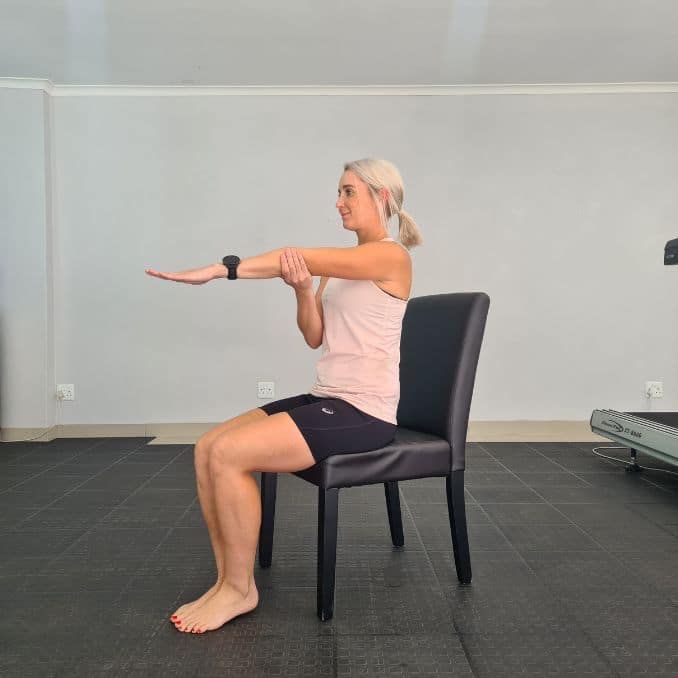 |
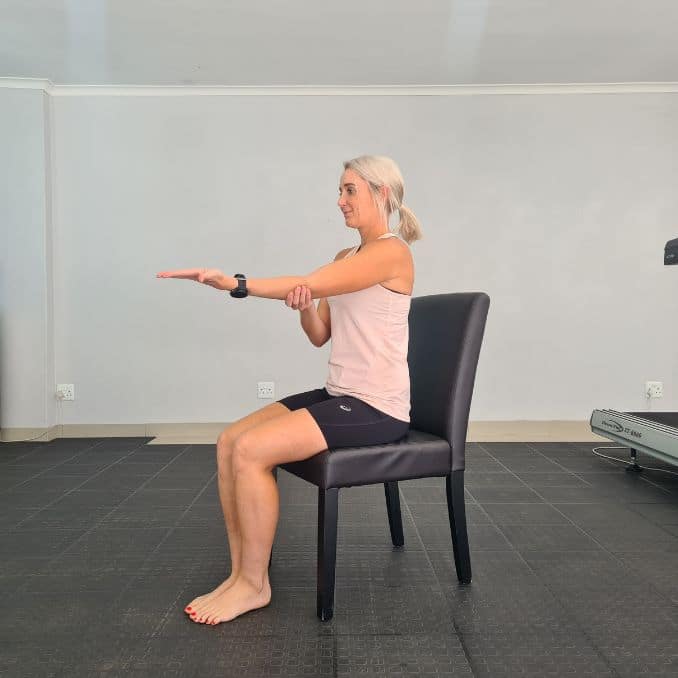 |
- Keep your affected elbow at your side, bent at about 90 degrees. Grasp a pen, pencil, or stick, and wrap your hand around it. Make a fist if you don’t have something to hold on to.
- Slowly turn your forearm back and forth in each direction as far as possible. Your hand should face up and then down.
- Hold each position for about 6 seconds.
- Relax for up to 10 seconds between repetitions.
- Repeat 8 to 12 times.
4. Hand Flips
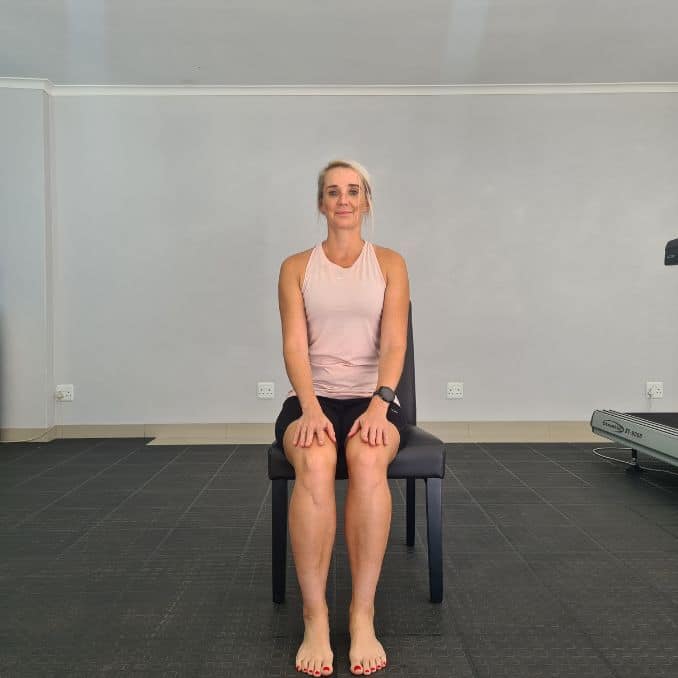 |
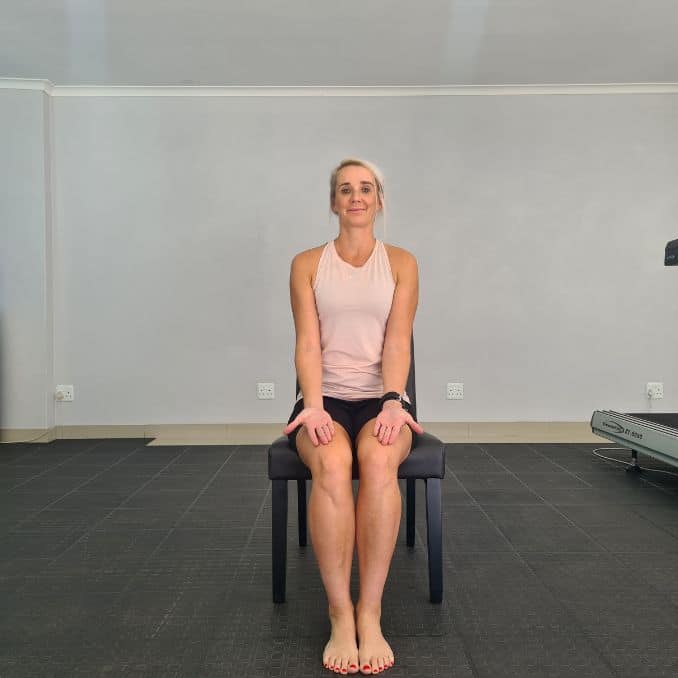 |
- While seated, place your affected forearm on your thigh. Your palm should face down.
- Flip your hand over, so the back of your hand rests on your thigh and your palm is up. Alternate between palm up and palm down while keeping your forearm on your thigh.
- Repeat 8 to 12 times.
The treatment is about easing discomfort and preventing or curing the infection. If the elbow bursa is not infected, take the following steps:
- Protect your elbow. This could mean wearing elbow pads or a wrap to cushion it.
- Avoid activities that put direct pressure on your affected elbow.
- Take pain medicine such as ibuprofen or other anti-inflammatories to reduce swelling and pain. Follow your doctor’s directions.
The following are things you can do to help prevent bursitis from returning:
- Keep pressure off your elbows. Do not lean on the elbows often, such as when working at a desk.
- Avoid hitting or bumping the elbows. Wear elbow pads or protectors when you begin normal activities. Wear them whenever you do activities that could cause bumping or hits to your elbows.
- Refrain from gripping small items too tightly. This includes using tools and writing with pens or pencils. Try not to clench your fists.
- Take breaks when doing activities or Elbow Bursitis Exercises that use repeated movements. This may help prevent injury caused by overusing or over-exercising your elbows. Wear an elbow strap when playing sports that use repeating movements, such as tennis.
- Warm-up and cool down. Start exercising when the doctor or physiotherapist says that it is safe. Always warm up your muscles and stretch gently before exercising. Do cool-down exercises when you are finished. This will loosen your muscles and decrease stress on your elbow.
- Start treatment right away if you feel bursitis signs and symptoms. Follow the R.I.C.E. plan (rest, ice, compression, and elevation) whenever you have swelling, warmth, or pain in your elbow.
OUTLOOK
Elbow bursitis is often caused by the usual activities you love. However, bursitis is quick to heal and does not require special treatment. Don’t ignore any new symptoms, especially pain or swelling. You need to treat these symptoms by taking a short break from the activity that caused bursitis. But if these symptoms persist, you should check them with your doctor.

